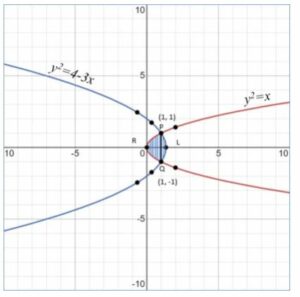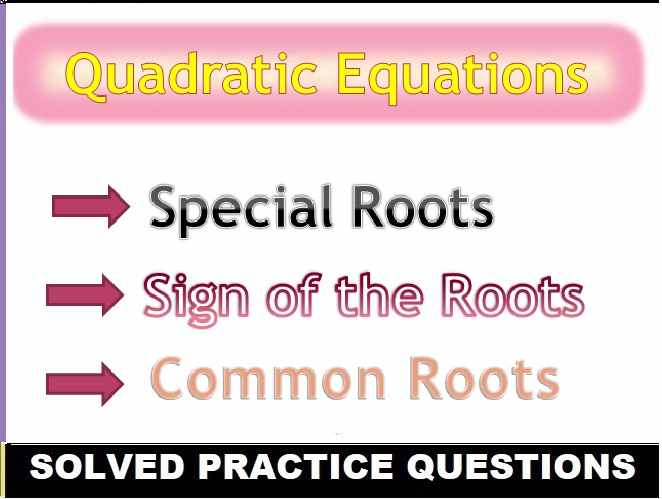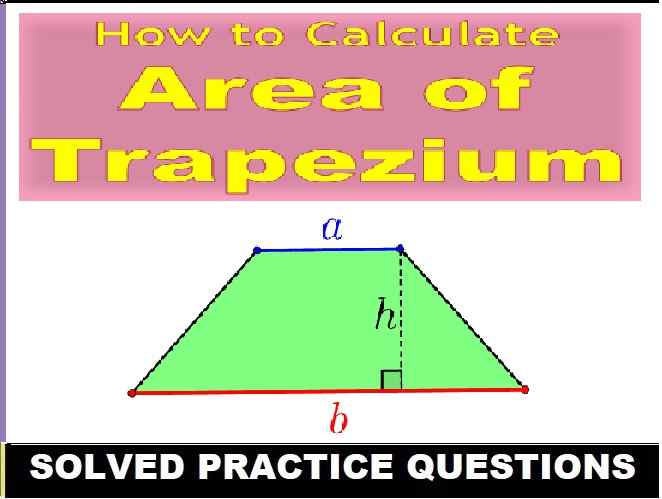ISC Maths 2020 Paper Solved Class-12 Previous Year Questions for practice. Step by step Solutions with section-A, B and C. Visit official website CISCE for detail information about ISC Board Class-12 Maths.
By the practice of ISC Maths 2020 Class-12 Solved Previous Year Question Paper you can get the idea of solving. Try Also other year except ISC Maths 2020 Paper Solved Class-12 Previous Year Question for more practice. Because only ISC Maths 2020 Paper is not enough for complete preparation of next council exam.
ISC Maths 2020 Paper Solved Class-12 Previous Year Questions for practice
-: Select Your Topics :-
ISC Maths 2020 Paper Solved Class-12 Previous Year Questions for practice
MATHEMATICS
Time Allowed: 3 Hours
Maximum Marks: 100
(Candidates are allowed additional 15 minutes for only reading the paper. They must NOT start writing during this time.)
The Question Paper consists of three sections A, B and C.
Candidates are required to attempt all questions from Section A and all question either from Section B or Section C
Section A: Internal choice has been provided in three questions of four marks each and two questions of six marks each.
Section B: Internal choice has been provided in two question of four marks each.
Section C: Internal choice has been provided in two question of four marks each.
All working, including rough work, should be done on the same sheet as, and adjacent to, the rest of the answer.
The intended marks for questions or parts of questions are given in brackets [ ].
Mathematical tables and graphs papers are provided.
SECTION – A (80 Marks)
ISC Maths 2020 Paper (Solved )
Question 1:
i) Determine whether the binary operations on
defined by
is commutative. Also, find the value of
.
ii) Prove that
iii) Without expanding at any stage, find the value of the determinant:
iv) If , find
v) Find if
vi) The edge of a variable cube is increasing at a rate of cm/sec. How fast is the volume of the cube increasing when the edge is
cm long?
vii) Evaluate
viii) Form a differential equation of the family of the curves
ix) A bag contains white,
red and
black balls. If four balls are drawn one by one with replacements, what is the probability that none is white?
x) Let A and B be two events such that
and
. Find
and
and
are independent events.
Answer-1
i) For commutative
for all
Given
. Hence proved.
.
ii) Given
Let
And let
LHS
RHS. Hence proved.
iii) Given
Note: Determinant of a Matrix with two Identical rows or columns is equal to 0. It is one of the property of determinants. If, we have any matrix with two identical rows or columns then its determinant is equal to zero.
iv) Given
v)
Differentiating on both sides
vi) Let the edge be
Given
cm/sec
We need to find at
cm
We know
vii)
viii) Consider the given equation.
… … … … … (i)
On differentiating both sides w.r.t , we get
… … … … … (ii)
From equations (i) and (ii), we get
ix) Balls are drawn one by one with replacements and each try is independent
Probability of not drawing a White ball
Therefore the probability of not drawing white ball in four consecutive draws
x)
Question 2:
If the function
be defined as
and
be defined as
.
Show that
Answer-4
If and
Similarly,
Hence proved.
Question 3:
a) If
, then prove that
b) Evaluate at
Answer-3
a)
Squaring both sides
OR
b)
Let
Question 4:
Using the properties of determinants, show that
Answer-4:
LHS
. Hence proved.
Question 5:
Verify Rolle’s theorem for the function in the interval
Answer-5
Step I: The function is continuous in
Step II: The function is derivable in
Step III:
Therefore there must be at least one point in
at which
Hence verified.
Question-6
If , prove that
Answer-6
Differentiating w.r.t
Squaring both sides
Differentiating again
Question-7
(a) The equation of a tangent at on the curve
is
. Find the value of
and
.
OR
(b) Using L’Hospital’s rule, evaluate
Answer-7
(a)
Differentiating w.r.t
Now as , slope of tangent
Since is lying on the curve,
OR
(b)
Question 8:
(a) Evaluate:
OR
(b) Evaluate:
Answer-8:
(a)
Using the method of completing the square first
Therefore
Since
OR
(b)
Let
 Question 9:
Question 9:
Solve the differential equation
Answer-9
Integration Factor
Now
Question 10:
Three persons A, B and C shoot to hit a target. Their probability of hitting the target are ,
and
respectively. Find the probability that
i) Exactly two persons hit the target
ii) At least one person hits the target
Answer-10
Given:
i) exactly two persons hit the target
ii) none of the three persons hit the target
Therefore Probability of at least one hitting the target
Question 11:
Solve the following system of linear equations using matrices: and
Answer-11
Given equations
and
where
exists means there is a unique solution
Question 12:
(a) Show that the radius of a closed right circular cylinder of a given surface area and maximum volume to is equal to half of its height.
OR
(b) Prove that the area of a right angled triangle of given hypotenuse is maximum when the triangle is isosceles.
Answer-12
(a)
Differentiating w.r.t.
Now
Differentiating again w.r.t.
which is negative. Hence volume maximum at
Now
and
. Hence proved.
OR
(b)
We know
Differentiating w.r.t.
Differentiating again w.r.t. we get less than 0 at
. Hence it’s maximum.
Therefore the triangle is an isosceles triangle.
Question 13
(a) Evaluate:
OR
(b) Evaluate:
Answer-13
(a)
Let
Let
Where
OR
(b)
Now, if
Now, if
Now, if
Question 14
The probability that a bulb produced in a factory will fuse after days is
. Find the probability that out of five such bulbs:
i) None will fuse after days of use
ii) Not more than one will fuse after days of use
iii) More than one will fuse after days of use
iv) At least one will fuse after days of use
Answer-14
Let be the number of bulbs that will fuse after
days of use in an experiment of
trials.
i)
ii)
iii)
iv)
Section-B (20 Marks)
ISC Maths 2020 Paper Solved Class-12 Previous Year Questions
Question 15:
(a) Write a vector of magnitude 18 units in the direction of the vector .
(b) Find the angle between the two lines
and
(c) Find the equation of the plane passing through the point and perpendicular to the line joining the points
and
.
Answer-15
(a)
(b)
and
Angle between and
is given by
or
(c) Given point ). d.rs of line joining the points
and
is
i.e.
or
Equation of plant passing through is
Question 16:
(a) Prove that
OR
(b) Using vectors, find the area of the triangle whose vertices are: and
.
Answer-16
(a) We have
RHS. Hence proved.
OR
(b) Given and
.
Area of
Area of
sq. units.
Question 17:
(a) Find the image of the point on the plant
OR
(b) Determine the equation of the line passing through the point and perpendicular to the lines
and
Answer-17
(a) The directional ratios of normal to plane are
Equation of
Coordinate of a general point on line is
This point lies on the plane
coordinate of
are
OR
(b) Equation of line passing through the point is
where
are direction ratios of the line.
Line is
to lines
and
The directional ratios of like can be found by solving equation
Therefore the equation of line L is
Question 18:
Draw a rough sketch of the curves and
and find the area enclosed between them.
Answer-18
… … … … … i) (equation of a parabola)
… … … … … ii) (equation of a parabola)
Points of intersection:
Therefore
The vertex of this parabola is
. It cuts the y axis at
and

Let cut the x-axis at
Total area area of
sq. units
Section – C (20 Marks)
ISC Maths 2020 Paper (Solved ) Previous Year Questions for Class-12
Question 19:
(a)
The selling price of a commodity is fixed at Rs. and its cost function is
i) Determine it’s profit margin
ii) Find the break even point
(b)
The Revenue function is given by . Find
i) The demand function
ii) Marginal revenue function
(c)
For the lines of regression and
, find the value of
and the mean of
Answer-19
(a)
and
i)
ii) At break even point
(b)
i)
ii)
(c)
… … … … … i)
… … … … … ii)
Solving i) and ii) we get and
and
Question 20:
(a) The correlation coefficient between and
is
. If the variance of
and the variance of
is
, mean of
is
and the mean of
, find:
i) the equations of two regression lines
ii) the expected value of when
OR
(b) Find the regression coefficient and the correlation coefficient
for the following data:
Answer-20
(a)
Given
i) Line of regression of on
Line of regression of on
ii) At
OR
(b)
| 2 | 4 | 8 | 64 | 16 |
| 6 | 36 | 8 | 64 | 48 |
| 4 | 14 | 5 | 25 | 20 |
| 7 | 49 | 6 | 36 | 42 |
| 5 | 25 | 2 | 4 | 10 |
Since has the same sign as regressions coefficient
Question 21:
(a) The marginal cost of the production of the commodity is , it is know that fixed cost are Rs.
, find;
i) The total cost
ii) The cost of increasing output from to
units
OR
(b) The total cost function of the firm is given by
where the selling price per unit is given as Rs.
. Find for what value of
will the profit be maximum.
Answer-21
(a)
i)
Integrating both sides
When
cost function
ii) Cost of increasing the output from to
units
cost of increasing output
Rs.
OR
(b)
Put
[ Therefore
is minimum at
]
[ Therefore
is maximum at
]
Question 22:
A company uses three machines to manufacture two types of shirts, half sleeves shirts and full sleeves shirt. The number of hours required per week on machines and
for one shirt of each type is given in the following table:
| Half Sleeves Shirt | 1 | 2 | 8/5 |
| Full Sleeves Shirt | 2 | 1 | 8/5 |
None of the machines can be in operations for more than hours per week. The profit on each half sleeves shirt is Rs.
and the profit on each full sleeves shirt is Rs.
.
How many of each type of shirts should be made per week to maximize the company’s profit.
Answer-22
Let the number of half sleeves shirts produced
Let the number of full sleeves shirts produced
Maximize
Constraints:

Now draw the three lines:
| 0 | 40 | 0 | 20 | 0 | 25 | |||||
| 20 | 0 | 40 | 0 | 25 | 0 | |||||

| A( 0, 20) | 30 |
| B(10, 15) | 32.5 |
| C( 15, 10) | 30 |
| D( 20, 0) | 20 |
Therefore the maximum value is at . Hence the company should make
Half Sleeves Shirts and
Full Sleeves Shirts to maximize profit.
-: End of ISC Maths 2020 Class-12 Solved Previous Year Question Paper :-
Return to – ISC Class-12 Solved Previous Year Question Paper
Thanks
Please Share with Your Friends


